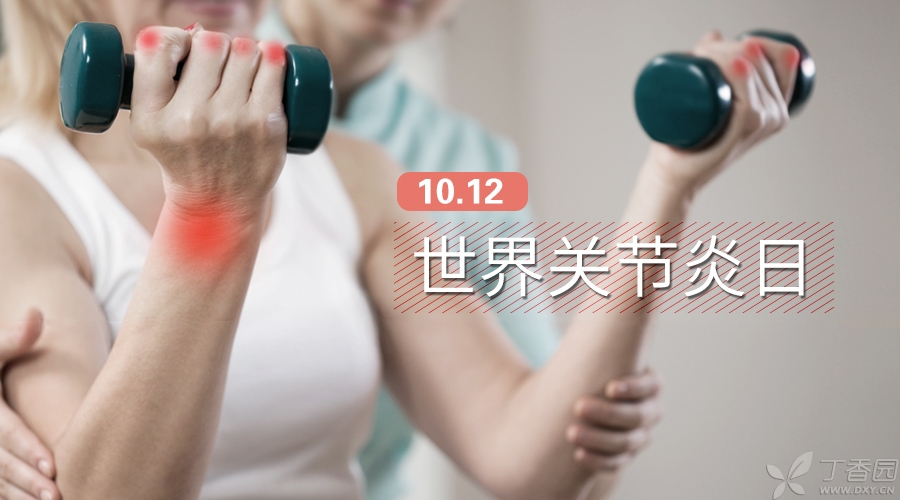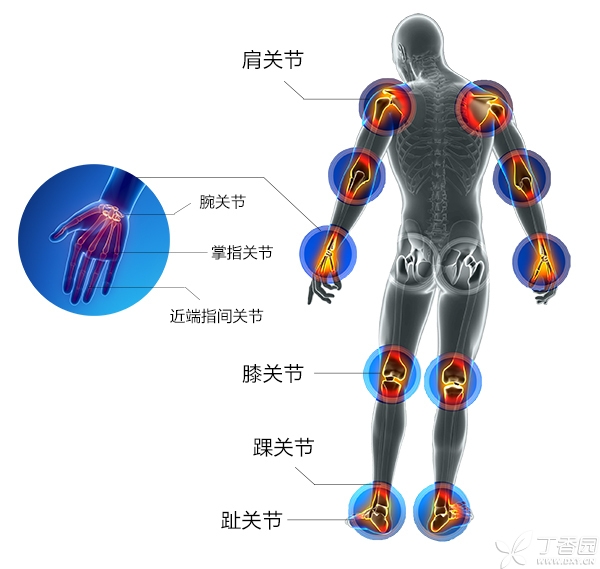
Every year, October 12 is World Osteoarthritis Day.
Arthritis is one of the most common chronic diseases, with a total of more than 100 types. According to the pathogenesis, degenerative osteoarthritis and rheumatoid arthritis are the most common.
Half of the people over 50 years old will suffer from osteoarthritis, and 90% of the people over 65 years old have this problem. We introduced the disease in detail in our earlier article < < Knee always hurts, but what should we do > > and can see it by clicking in.
Today, we will focus on rheumatoid arthritis.
Different from osteoarthritis, rheumatoid arthritis can affect the whole body health, causing symptoms such as loss of appetite and general malaise. Women are three times more likely to suffer from rheumatoid arthritis than men, and 35-50 years old is the most common age group for the disease.
Four Facts of Rheumatoid Arthritis
Fact 1: Rheumatoid arthritis is an immune system disease, and weather is neither the cause nor the treatment.
Fact 2: Rheumatoid arthritis cannot be cured. Those who claim to be cured are cheats, but active treatment can prevent disability.
Fact 3: Rheumatoid arthritis is a chronic disease that lasts for life but is not fatal.
Fact 4: Rheumatoid arthritis needs to go to the rheumatic immunology department. Generally, large 3A hospitals have rheumatic immunology department. For hospitals that do not have rheumatic immunization, they can go to the nephrology department.
4 major symptom
Symptom 1: Joint Stiffness
Joint dyskinesia and limited movement. Among them, [morning stiffness] is one of the landmark symptoms of rheumatoid arthritis.
Symptom 2: Swelling
Joint cavity effusion causes joint swelling.
Symptom 3: Pain
Inflammation in the joint cavity makes it sensitive and fragile. Persistent arthritis leads to joint destruction and pain.
Symptom 4: Redness and fever
The skin at the joint will be redder and hotter than the surrounding skin.
The 7 joints that are most prone to problems:

7 Diagnostic Basis:
Basis 1: Long morning stiffness time
[Morning stiffness] occurs in and around the joints, i.e. The movement restriction is especially severe after getting up in the morning, as if this person [stiffens], lasting for at least one hour.
Basis 2: Wide Spread
At least 3 joints developed swelling or effusion at the same time.
Basis 3: Invasion of facet joint
Swelling occurs in at least one part of wrist, metacarpal finger or interphalangeal joint.
According to 4: distribution is symmetrical
Symmetrical swelling (soft tissue).
Basis 5: Rheumatoid Nodules
Rheumatoid nodules appear in many facet joints of the body.
Basis 6: Hematological Abnormalities
Abnormal rheumatoid factor content appeared in blood examination.
According to 7: X image changes
Typical X-ray changes occurred in the late stage of the disease, showing bone destruction around hands, wrists and joints.
Rheumatoid arthritis can be diagnosed if 4 of the above 7 items are met.
Five items of preparation before seeing a doctor
Preparation 1: Personal Identification
Medical insurance cards and identity cards are all essential.
Preparation 2: Medical History Data
Carry medical history records and information about the drugs you are currently taking;
Preparation 3: Know the location of the hospital
Understand the location and traffic situation of the hospital and calculate the time.
Preparation 4: Know Your Doctor
Understand the doctor’s professional director and visiting time;
Preparation 5: Understand the medical treatment process
The doctor will generally ask you to describe the relevant illness and symptoms, then conduct an examination (blood test and film taking) according to the situation, and then draw up a treatment plan according to the examination results.
Responsible Editor: Cat Capricorn
Copyright of Clove Garden. No reprinting is allowed without permission.
Photo Source: Dr. Clove Design Team
